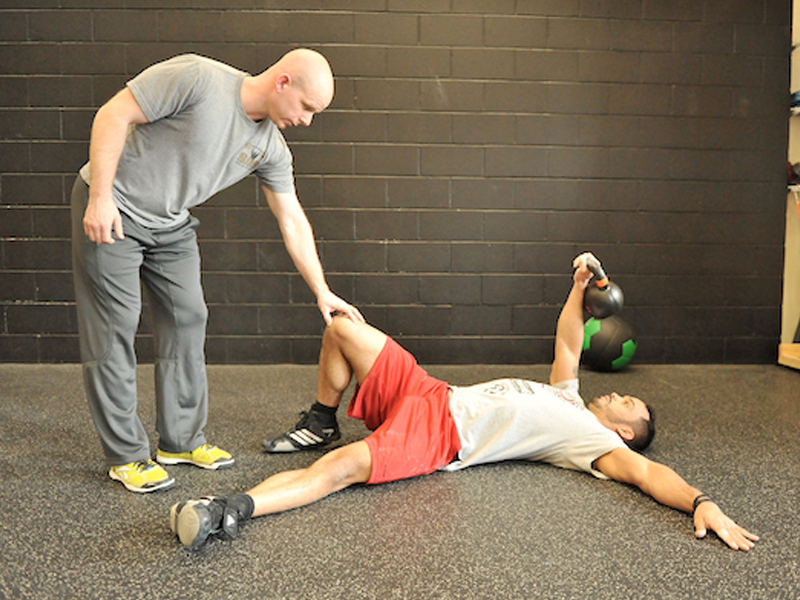Lets imagine this scenario for a minute. Two fighters are in the cage ready for battle. They have equal skill, reach and training background.
Fighter #1 doesn’t strength train much, isn’t very strong and doesn’t do any extra conditioning besides sparring.
Fighter #2 can deadlift more than 2x bodyweight, he can perform strict pull-ups with 50+ lbs, he trains 3 days a week to develop his explosiveness and conditioning and he has better grip strength than fighters 30 lbs heavier than him.
Now, if you have to bet your life savings on one of these fighters, who would it be?
Fighter #1 or fighter #2?
I think you know the answer.
In the last two years our fighters have done incredibly well. I believe our fighter’s current records are around 25-2. Nothing is more rewarding than helping local fighters make their way up through the ranks and have success at the highest level. I’m truly lucky to work with such great individuals.
I’d like to believe that my job has had a positive impact on the career of these athletes and I would love to share with you my thoughts on my role as an MMA Strength and Conditioning Coach.

Let’s start from the beginning shall we?
Assess everything.
Get metrics and numbers on as much as possible. A few things to consider…
Movement Baseline
I use the FMS as well as other orthopedic assessments that are great for identifying mobility and/or stability issues. If you move poorly, you will expend more energy than necessary in the cage.
Why fight movement restrictions and your opponent simultaneously?
Strength Assessment
You don’t need to be a power lifter, but you should be entry-level strong. A double bodyweight deadlift, 24K strict pull up and double bodyweight barbell bridge is a great place to start. You don’t need crappy kipping pull-ups, piss poor olympic lifts and the pec dec for MMA.
Start with the steak then add the sizzle.
Conditioning Assessment
How is a fighter’s conditioning overall? Does he have a good aerobic base? Can he perform a systemic exercise for :30 all out without completely gassing out? How is the fighter’s upper body and lower body power production? Can they replicate that explosiveness over and over again?
There are many other metrics to explore, but my suggestion is to start with the assessments above.
Although I am a strength and conditioning coach for my fighters, I often feel like my role is to help govern their weekly training volume. I’m always asking my fighters about their training load, which generally includes BJJ, Muay Thai, wrestling and/or MMA.
This gives me an idea on how to structure each fighter’s training. If a fighter is training a large amount of volume of single leg/double leg take downs, I may need to back off squats or other quad-dominant lower body exercises in his training sessions with me. I need to remember that skill work often times comes before strength and conditioning. When possible, I monitor workload, fatigue, and training volume via heart rate variability. These units give me more information on how a fighter’s body is performing day-to-day.
More information is better! As my good friend Brett Jones says, better is better!
My job is to make fighters more mobile, stronger, faster, and better conditioned than their opponents. I don’t hold pads. I don’t spar. I don’t roll with my guys. I have no skill in those areas and to be honest, it would not provide any benefit to my fighters. If I can gradually make my athletes stronger than their opponents, they have an advantage.
Through energy system development, we build bigger gas tanks, and through this type of conditioning, we forge mental toughness. Our workouts are very simple, but not easy. We have specific goals and qualities that we are trying to develop through our system at MMA Fight Prep and Skill of Strength.
Everything in training should serve a purpose. If you are a strength coach and you’re just training your athletes into fatigue, you are missing the boat. An MMA strength and conditioning coach should provide fighters with the skills and qualities to enhance their performance in the cage.

If you are training with a strength and conditioning coach and you aren’t getting stronger and in better shape for every fight, it might be time to switch it up. There should be carry-over into your sport. If there is not, it’s virtually pointless.
As always, train smart, train hard and train with a purpose!

